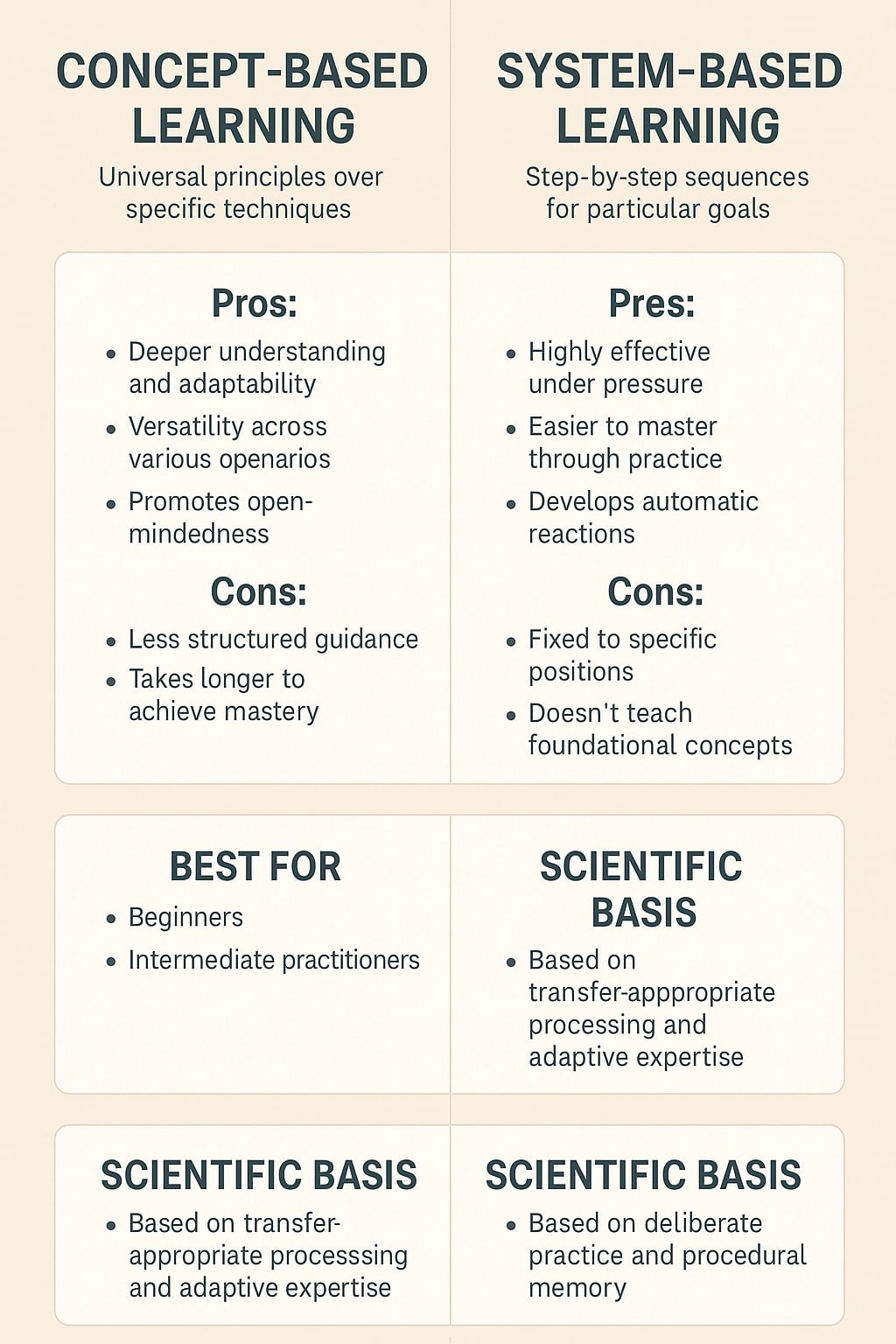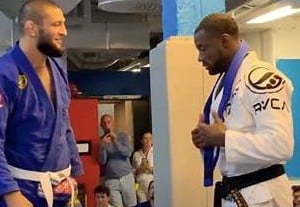Concept vs. System-Based BJJ Instructionals: What Science Says About How You Learn Best
If you’ve browsed BJJ Fanatics or any other instructional platform, you’ve probably noticed a clear split in teaching styles: concept-based instructionals and system-based instructionals. Both approaches can take your game to the next level — but which is better?
The answer depends on how you learn, where you are in your journey, and what you want to achieve with your jiu-jitsu.
In this guide, we break down the strengths and weaknesses of both learning models, highlight the science behind them, and recommend when to use each for faster, more effective improvement.
Affiliate Disclosure: This post contains affiliate links. If you make a purchase, I may earn a commission at no extra cost to you.
What Are BJJ Concept-Based Instructionals?
Concept-based instruction focuses on universal principles instead of fixed techniques. These lessons help you understand the why and how behind movement, leverage, control, and timing.
This model aligns with schema theory in motor learning, proposed by Richard Schmidt. Schema theory suggests that learning is enhanced when learners understand the general rules (or “schemas”) behind a movement, enabling them to adapt to new situations more effectively.
Pros:
- Develop a deeper understanding and adaptability
- Works across different positions and situations
- Builds problem-solving skills under pressure
- Great for open-minded learners and hobbyists
Cons:
- Less plug-and-play for competition
- Can feel abstract or unstructured without a base
Best For: Beginners, intermediate grapplers, and students who train at gyms with less structured curriculums.
Recommended Concept-Based Instructionals:
- BJJ Concepts – Lachlan Giles
Teaches positional goals, guard retention, and balance in all phases. - Diamond Concept of Defence – Xande Rebeiro
Learn the diamond concept from Xiande, a fast way to understand the concepts about defence.
What Are System-Based Instructionals?
System-based instructionals focus on step-by-step sequences built around a specific position or goal. They create structured frameworks: pass the guard, establish control, isolate the limb, and submit.
This approach is supported by procedural learning theory in cognitive science, which posits that repetition and sequencing help automate skills. Research in skill acquisition shows that clearly defined procedures increase retention and reduce decision fatigue during performance, especially under stress.
Pros:
- Extremely effective for competition and live rolls
- Easier to internalize through repetition
- Builds automatic reactions under pressure
Cons:
- May feel rigid or overly dependent on specific positions
- Doesn’t teach underlying principles unless explained well
Best For: Competitors, structured learners, and intermediate or advanced practitioners.
Recommended System-Based Instructionals:
- Back Attacks – John Danaher
A full breakdown of taking, controlling, and finishing from the back. - Shall not Pass – Gordon Ryan
Incredibly detailed, from distance to pressure passing.

Science Behind the Split: Why It Matters
Motor Learning Principles
- Concept-Based Learning parallels “variable practice”, which promotes adaptability and retention. Grapplers exposed to varied stimuli develop better “perceptual attunement.”
- System-Based Learning resembles “blocked practice”, which promotes skill fluency and confidence in predictable sequences.
Cognitive Load Theory
System-based approaches reduce cognitive load by guiding the learner through a predefined path. This is ideal for novices who may be overwhelmed by the chaos of sparring.
Concept-based training, however, increases the learner’s intrinsic motivation and promotes metacognitive strategies, helping them think like problem-solvers on the mat.
Which Style Is Better for You?
The truth is, you need both.
- If you’re a beginner: Start with concepts to build instincts and understanding.
- If you’re competing or want fast results: Choose a system and drill it hard.
- If you’re advanced: Combine systemic structure with conceptual awareness.
Final Recommendation
Invest in a concept-based course for understanding, and a system-based course for execution. That blend will make your learning faster, deeper, and longer-lasting — and the science backs it up.
For example, try pairing Lachlan Giles’ BJJ Concepts with Gordon Ryan’s Passing the Guard to internalize both the why and the how behind every move.
Related Reading
- Three ways to learn Brazilian Jiu Jitsu
- The ecological approach to learning BJJ
- How you can learn BJJ at home




